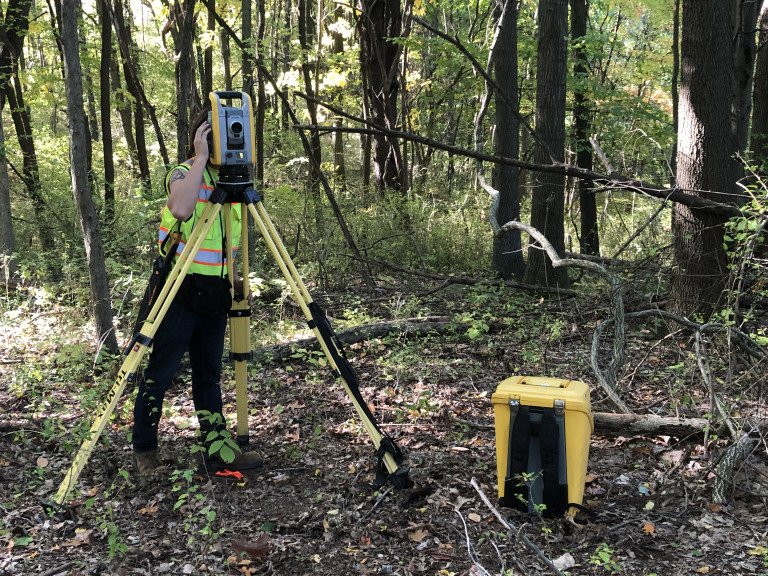So You Have a Few Extra Acres
Article | 03.25.2021If the title of this article begged continued investigation, I’m guessing the subject of dividable land may interest you. First, the disclaimer. “This article in no way purports to address all the nuances involved with the division of land. With that said, my goal is to inform you of the three most commonly used methods for dividing real estate in Michigan and to highlight some of the common variables to consider when deciding which method to use.
The Land Division Act. The Land Division Act regulates two out of three of the most commonly used methods for dividing land. In an over simplification of a very detailed piece of legislation, the Land Division Act basically allows land to be “divided” into parcels or “subdivided” into lots. Whereas both parcel divisions and subdivided lots are evaluated and approved at the local level, the subdivision approval process continues beyond the municipality to various state agencies before obtaining final approval. Although a significantly slower process than parcel divisions, the primary benefit of the subdivision is that it typically allows for a greater number of building sites.
The Condominium Act. An alternative method for creating buildable parcels of land uses the Condominium Act as its regulatory authority. In the world of highly leveraged land development, time means money. Frustrated with how long it took to get a subdivision approved, the development community found an alternative to the subdivision lot in the Condominium Act.
Noting that the definition of a condominium unit “basically” amounted to a three-dimensional volume, land developers soon realized they could forego the lengthy subdivision process (which created lots) in exchange for the expedited condominium process (which created units). These condominium units, however, would not be bound by ceiling, walls, and floors, as are traditional building condominiums. Instead, the three-dimensional volume (or units) would be comprised of the actual development site. Thus, the term “site” condominium.
The units within a site condominium differ from subdivision lots in that the vertical limits of ownership are limited. Whereas, with a subdivision “lot” vertical ownership is not addressed and is typically assumed to extend to the center of the earth and the highest heavens, a site condominium “unit” has specified vertical limits, which would include air space and soils. Ownership of the ground space below and the air space above these vertical limits is typically vested in the condominium association (of unit owners).
Which Method to Use? Many factors come into play when deciding whether to divide land as divided parcels, subdivided lots or site condominium units. Some of the variables affecting your decision may include the following:
- The amount of acreage to be divided
- The amount of available road frontage
- Zoning as it relates to minimum parcel size and width
- Whether interior roads will be constructed to service the new parcels and, if so, will they be public or private
- The availability of public utilities
- The extent to which the owner wants to restrict the land, and
- The complexity of the local approval process
This list is by no means exhaustive. In order to make an informed decision, the services of a professional surveyor well versed in land development are indispensable. In most instances, the counsel of an attorney experienced in real estate development more than justifies his or her fees. Perhaps the questions of which method to use could best be answered by outlining the conditions that seem to dictate to the development community which method they will use:
Parcel divisions under the Land Division Act
- Limited number of divisions to be taken
- Sufficient road frontage exists to service proposed divisions
- Few, if any, restrictions to be placed on land
- Approval for divisions within 45 days
- Used to generate cash as a means of bankrolling continued development
- Legal counsel helpful
Subdivision lots under the Land Division Act
- Larger number of lots typically available than by division
- Construction of new roads and utilities anticipated to service lots
- Newly constructed roads typically dedicated for public use and maintained by the local municipality or road commission
- After development, developer involvement is minimal
- Homeowners association non-existent or fairly inactive
- Legal counsel recommended
Site Condominium units under the Condominium Act
- Larger number of lots typically available than by division
- Parcels most commonly served by wells, septic systems and private roads (although not always the case)
- Well suited where private parks, roads and other amenities require an active homeowners association
- Developer involved in association until majority of units are sold
- Enforcement provisions necessary to help insure compliance with restrictions and collection of association dues
- Legal counsel required
About the Author
Greg Vaughn began his surveying career with the U.S. Army in 1984 and has since performed surveys in seven states and two countries. He joined Wightman in 2017. In his role as a senior project manager, he blends his expertise in land surveying with his business development acumen to expand the company’s presence in the West Michigan market and beyond as it relates to reality capture and surveying. Greg specializes in project management for land development and condominium conversion projects. He also provides expert witness consulting and testimony in boundary litigation and riparian bottomland apportionment cases.
